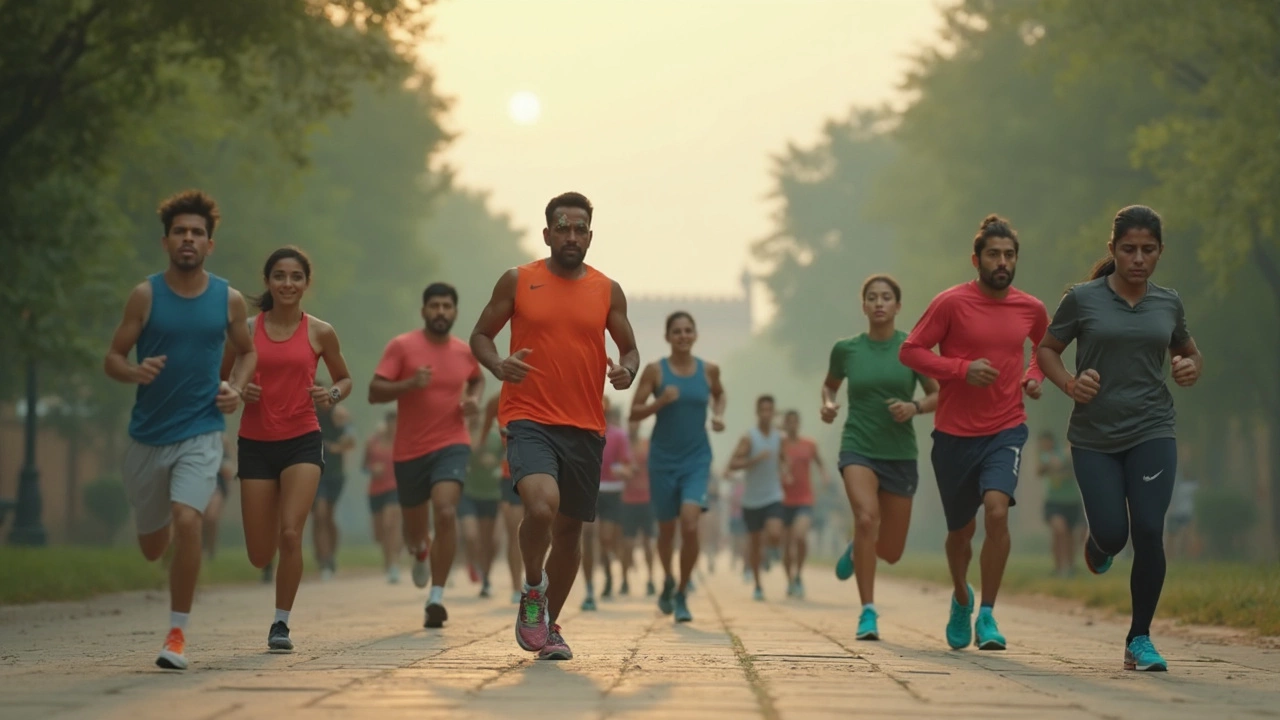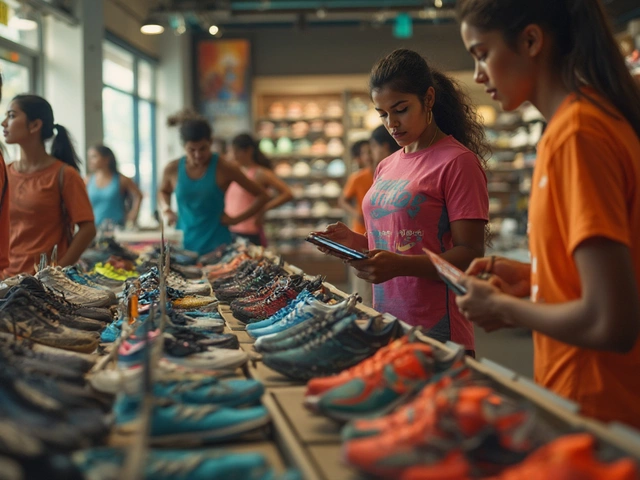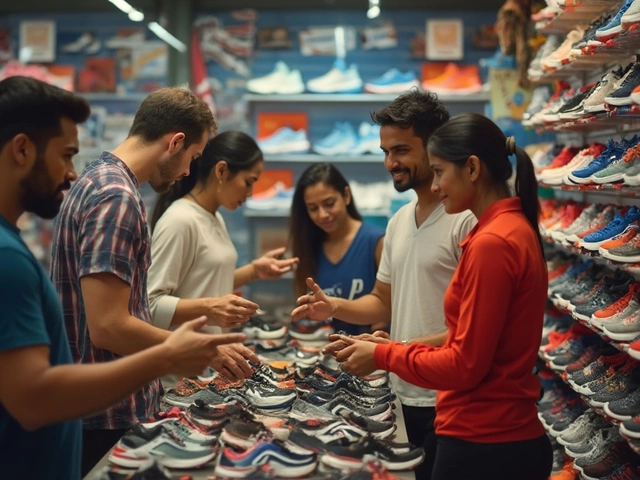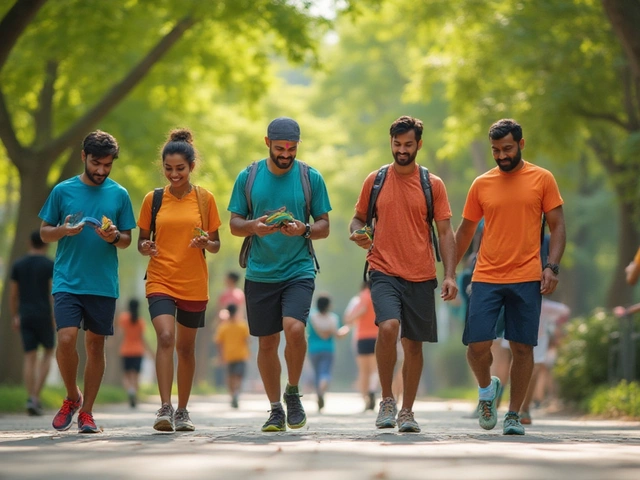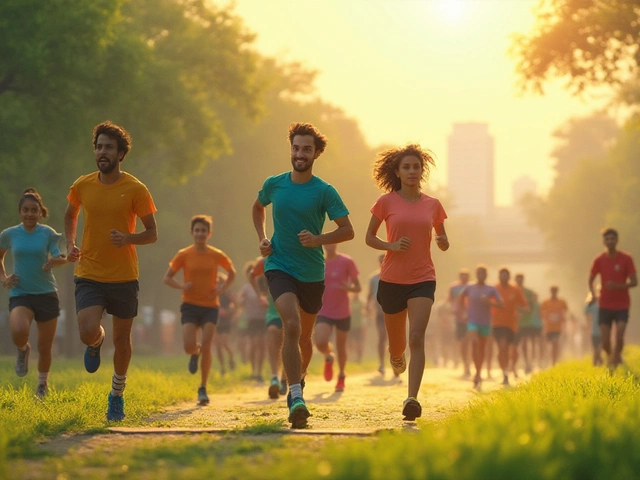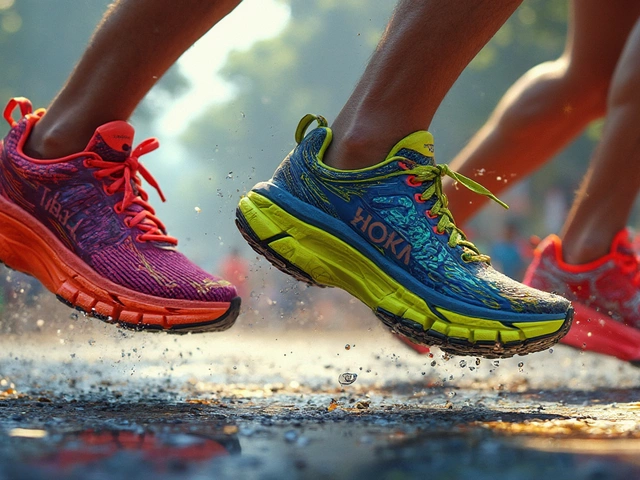If you’ve ever wandered into a shoe store, you’ve probably seen Adidas running shoes taking up a big chunk of the wall. But are they actually good for running, or just overhyped because of that familiar logo? Here’s the deal: Adidas isn’t just riding on name recognition. Their running shoes are packed with technology that actually matters when you’re pounding the pavement or hitting the trails.
Adidas goes all in on comfort and innovation. Think soft yet springy foam like their BOOST or Lightstrike midsoles and snug uppers that fit like a second sock. These features aren’t just stuff from marketing flyers—they can make your run feel smoother and help with fatigue over miles. But not every Adidas model is a hit for every kind of runner, and that’s where knowing what you need makes a difference.
Many runners keep coming back to Adidas because you can actually feel the difference in features like their torsion bar (Stabilizing your foot!) or Continental rubber outsoles that grip wet roads. But before you buy, you should know what to expect, which models are worth your cash, and a few simple things to check before you lace up and head out the door.
- The Adidas Approach to Running Shoes
- Cushioning and Comfort: What Sets Adidas Apart
- Popular Adidas Running Shoes Reviewed
- Adidas vs Competitors: Real-World Insights
- How to Pick the Right Adidas Model for You
- Tips for Getting the Most Out of Your Adidas Shoes
The Adidas Approach to Running Shoes
Adidas isn’t jumping on random design trends. Their research team tweaks and tests every bit of their running shoes to make sure each pair actually performs on the road and trail. It’s not just about looking good—there’s a clear focus on materials that boost performance and protect your legs, whether you’re a marathoner, casual jogger, or somewhere in between.
Take their BOOST foam as an example. This was a game-changer when Adidas launched it back in 2013. BOOST is made from thermoplastic polyurethane (yeah, TPU if you’re nerdy about materials), and the result is a bouncy, cushioned ride that doesn’t bottom out even after long miles. Studies have shown runners in BOOST shoes report lower leg fatigue than with traditional EVA foam. And this tech sticks around—in 2024, the BOOST lineup (think: Ultraboost and Supernova) is still a top choice for folks who want plush but energetic cushioning.
Adidas also uses Lightstrike and Lightstrike Pro foams for runners who want that snappy, responsive feel—especially in their race-day shoes like the Adizero Adios Pro. Mixed in is a focus on breathable mesh uppers, heel counters to lock your foot in place, and Continental rubber outsoles for no-slip traction (yep, that’s the same Continental known for car tires).
You can spot the difference in features with this breakdown:
| Shoe Model | Cushioning Tech | Main Use | Notable Feature |
|---|---|---|---|
| Ultraboost | BOOST | Daily Training | Extra-plush midsole |
| Adizero Adios Pro 3 | Lightstrike Pro | Race/Tempo | Carbon-infused plate |
| Solar Glide | BOOST/Stable Frame | Daily/Long Runs | Added stability |
| SL20.3 | Lightstrike | Speed Work | Lightweight build |
The Adidas approach is all about building purpose-driven shoes. Each model is tuned for a certain style of running—distance, racing, or daily miles. No one-size-fits-all nonsense. And they’re not afraid of pairing up with big names, from pro marathoners designing shoes to tech collabs that genuinely add value instead of just boosting hype.
Cushioning and Comfort: What Sets Adidas Apart
What makes Adidas especially stand out in the running shoe game? It’s their approach to cushioning and how they keep your feet feeling fresh mile after mile. The most well-known Adidas tech is the BOOST midsole. Those funny-looking bouncy pellets actually matter—BOOST foam is famous for returning energy back to your stride, which means you put less effort into each step and feel less beat up after long runs.
If you want something lighter, look for their Lightstrike and Lightstrike Pro foams. These show up in lots of their racing and tempo models. Lightstrike is more responsive than BOOST and doesn’t pack down as quick. For runners who hate heavy shoes, this stuff actually makes you feel faster without sacrificing too much comfort.
Want to see how Adidas stacks up? Here’s a quick side-by-side with some top models:
| Model | Cushion Tech | Best For | Weight (Men's US 9) |
|---|---|---|---|
| Ultraboost 23 | BOOST | Daily Training, Recovery | ~10.3oz |
| Adizero Boston 12 | Lightstrike Pro | Long Runs, Faster Paces | ~8.6oz |
| Supernova Rise | Dreamstrike+ | Beginner Runners, Cushion Lovers | ~9.8oz |
It’s not just about foam, though. Adidas running shoes often use stretchy mesh uppers with their Primeknit technology, wrapping your foot without feeling tight. Plus, most midsoles stay cushy for hundreds of kilometers, so you don’t end up running in dead shoes after two months.
- If you want a plush feel and lots of bounce, try BOOST.
- If you chase speed or lightweight shoes, check out Lightstrike models.
- If stability is your thing, look for shoes with their Torsion System, which helps guide your foot and prevents awkward twists.
One more tip: sizing can be a bit snug with Adidas, especially in their race shoes, so try them on or size up if you’re in between. The bottom line? Adidas has dialed in comfort for all kinds of runners. If comfort and innovative cushioning matter to you, you’ll find options for almost every type of run.
Popular Adidas Running Shoes Reviewed
You’re probably wondering which Adidas running shoes are actually worth checking out if comfort, performance, and value matter to you. Here’s a real-world look at a few models runners can’t stop talking about, plus some numbers that might help you pick what fits your needs.
- Adidas Ultraboost: This is Adidas’ most hyped running shoe, and honestly, for good reason. The BOOST foam in the midsole is like running on mini trampolines; it’s soft, bouncy, and great for long runs. The Primeknit upper fits snug but doesn’t squeeze your foot, which is a win for people tired of shoes that rub the wrong way.
- Adidas Adizero Boston: For folks looking to pick up the pace, the Adizero Boston line is a go-to. It’s lightweight, more responsive, and gives you a close-to-the-road feel. Lots of marathoners like to use these for speed workouts or even race day.
- Adidas Solar Glide: This one sits in the middle ground. It’s got a BOOST midsole too, but it’s a bit firmer and more stable than Ultraboost. Good option if you mix easy runs with a bit of tempo work.
- Adidas Supernova: This is a reliable, entry-level trainer. Not as flashy, but it covers basics well with decent cushioning and durability, ideal if you’re just starting out or want a daily pair that won’t break the bank.
- Adidas Terrex (for trail): Heads up for trail lovers, the Terrex lineup has grippy Continental rubber outsoles that really shine on unpredictable surfaces. If your runs take you off-road, this set can help you avoid embarrassing slips.
| Model | Best For | Weight (Men's US 9) | Cushioning | Price (USD) |
|---|---|---|---|---|
| Ultraboost 23 | All-Day Comfort, Long Runs | 10.9 oz | High (BOOST) | $190 |
| Adizero Boston 12 | Speed, Races | 8.6 oz | Medium (Lightstrike Pro) | $160 |
| Solar Glide 6 | Daily Training | 10.4 oz | Medium/High (BOOST) | $140 |
| Supernova 3 | New Runners, Easy Runs | 10.6 oz | Medium (Bounce+) | $100 |
| Terrex Speed Ultra | Trail Running | 9.7 oz | Medium (EVA/Lightstrike) | $140 |
Heads up: sizing can be a bit off in some Adidas running shoes. A lot of runners go up half a size, especially if their feet swell on longer runs. And if you have a wide foot, Ultraboost might be a tad snug out of the box, so try before you buy if possible.
When it comes to durability, most Adidas runners get around 300–500 miles, which is standard for this price range. The Continental rubber outsole is actually something you’ll notice if you run on slippery or wet roads—it really does grip better than most.
So, which one is right for you? If plush comfort is your priority, Ultraboost is an easy pick. Chasing a PR? Check the Adizero Boston. Just getting started? Supernova’s your friend. Adidas offers something solid no matter where you are on your running journey.
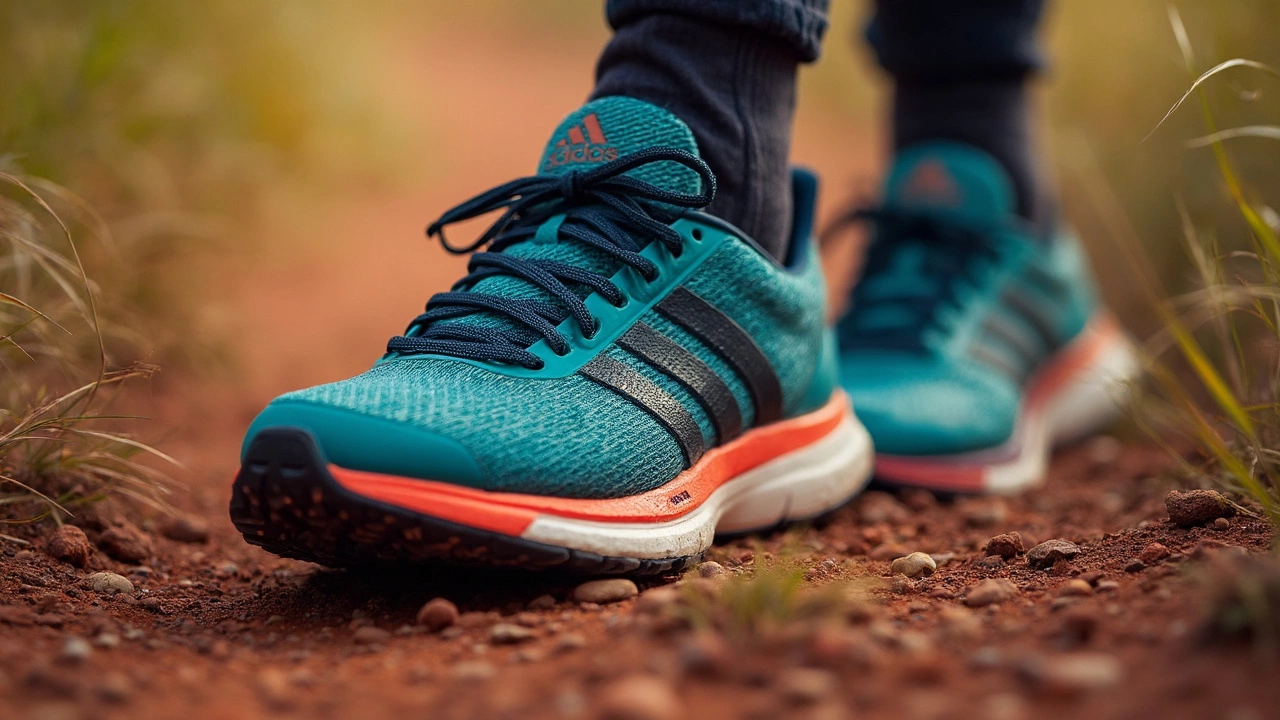
Adidas vs Competitors: Real-World Insights
When runners talk shop, Adidas always pops up alongside names like Nike, ASICS, and New Balance. What’s interesting? Each brand nails a different kind of runner. But let’s get specific about what Adidas does differently compared to its main rivals—and where it sometimes falls short.
Ask any group of runners why they pick Adidas, and one answer comes up a ton: BOOST cushioning. Plenty of people swear it’s the most forgiving midsole on tired legs, especially for longer runs. In fact, the Boston Marathon saw over 20% of finishers lacing up in BOOST models back when the technology launched—a strong sign people felt the difference. Nike’s ZoomX foam is lighter and bouncier, but a lot of runners find it less stable for casual or everyday miles. ASICS leans on GEL for shock absorption, which is plush but heavier. New Balance brings a comfy fit but often runs a bit wider through the toe box, which some folks love and others don’t.
| Brand | Popular Cushioning | Weight (Men's US 9) | Best for |
|---|---|---|---|
| Adidas | BOOST/Lightstrike | 9.0-10.2 oz | Daily training, long runs |
| Nike | ZoomX/React | 8.0-9.2 oz | Racing, tempo runs |
| ASICS | GEL/FlyteFoam | 8.8-10.8 oz | Stability, cushioning |
| New Balance | Fresh Foam | 8.9-10.3 oz | Wide feet, comfort |
Adidas stands out when it comes to outsole grip. Most Adidas models use Continental rubber, the same stuff you’d see on high-end car tires. That extra grip comes in clutch on wet roads or uneven trails. Nike and New Balance outsoles are good, but folks often notice quicker wear on their softer foams.
Durability is another Adidas plus. People report cranking out 400-500 miles in their Ultraboosts with minimal breakdown. For comparison, Nike racing shoes usually fade faster (closer to 200-300 miles) due to thinner midsoles and uppers. Still, Adidas does have a rep for running a bit narrow, especially in popular models like the Adizero series, so wider-footed runners might feel squeezed.
- If you run mostly on pavement or in rainy conditions, the Continental outsole gives you real peace of mind.
- Runners who want the latest tech for speedwork might find Nike’s top models just a bit snappier.
- Need long-haul comfort and durability? That’s where most Adidas models really shine.
The bottom line: Adidas fires on all cylinders where it matters—comfort, durability, stability, and grip. There are trade-offs, especially in the weight and fit, but for everyday runners looking for a dependable shoe, Adidas has serious street (and trail) cred in the Adidas running shoes game.
How to Pick the Right Adidas Model for You
Shopping for running shoes can feel overwhelming when every shelf is loaded with choices. Adidas alone has more than a dozen running lines, each claiming to offer the best fit, bounce, or grip. But you don’t have to guess if you focus on a few key factors before grabbing a pair.
The first thing to look at is what type of running you usually do. Are you clocking miles on pavement, hitting muddy trails, or mixing in some treadmill sessions at the gym? Different surfaces need different tech. For road running, shoes like the Adidas Ultraboost or Adizero Boston are solid—Ultraboost is all about comfort and softness, while Adizero Boston gives you a faster, lighter feel. If you’re into trail running, the Terrex series brings beefed-up grip and more protection from rocks and roots.
Next, think about your foot shape and injury history. Got flat feet or need more arch support? Adidas Supernova and Solar Glide have more built-in stability. Love a plush ride with serious spring? Ultraboost is famous for just that, but it runs a little heavy, so if you race, you might want the lighter Adizero Adios instead.
Here’s a simple checklist to help match the right Adidas model to your needs:
- Comfort and fit—Always try them on. Adidas uses a regular to narrow fit, so wide-footed runners should focus on Prime X or some Solar line models.
- Type of run—Ultraboost for daily mileage, Adizero for speed, Terrex for trails.
- Cushion preference—BOOST foam is very soft; Lightstrike is firmer and snappier.
- Support—Solar Glide and Supernova for stability, SL20 and Takumi Sen for a neutral, lightweight ride.
- Weight—Adios Pro 3 is helpfully light for racing compared to beefier options like Solar Glide.
If you want a quick comparison, check out this table. It sums up some of the most popular Adidas running shoes and what they’re best for:
| Model | Best For | Cushion | Approx. Weight (Men’s US 9) | Release Year |
|---|---|---|---|---|
| Ultraboost 23 | Daily Mileage, Comfort | High (BOOST) | 309g | 2024 |
| Adizero Adios Pro 3 | Marathon, Racing | Lightstrike Pro (Firm) | 215g | 2022 |
| Solar Glide 6 | Stability, Daily Run | Medium (BOOST + EVA) | 320g | 2023 |
| Terrex Agravic Ultra | Trail, Mixed Terrain | Firm (Lightstrike + Pro Plate) | 290g | 2023 |
| SL20.3 | Speed workouts | Low-Med (Lightstrike) | 238g | 2023 |
If you’re after the Adidas name mainly for looks, remember that the best shoe for running feels barely there after a few miles—not just good on Instagram. Bring your old runners in-store, check how the tread wore down (it reveals what you need!) and don’t rush the try-on. Lace up, walk around, even hop a little if they’ll let you. Your feet—and knees—will thank you later.
Tips for Getting the Most Out of Your Adidas Shoes
You just picked up a slick new pair of Adidas running shoes—now you want them to last and perform. Simple routines and smart habits can stretch their life and keep your runs feeling good, no matter which model you picked up.
- Adidas uses different foams like BOOST and Lightstrike. Give your shoes a break between runs so the midsole can recover its bounce. Rotating with a second pair extends the cushion life.
- Always untie your laces instead of just kicking your shoes off. Yanking the heel breaks down the structure faster, leading to a sloppy fit way too soon.
- Stick to the surfaces the shoes are made for. For example, road shoes like Ultraboost aren’t built for muddy trails, and the Continental rubber outsole wears down quicker on rough, rocky ground.
- Clean them with a soft brush and soapy water every few weeks. Tossing them in the washer sounds tempting but usually ruins the glue and the shape.
Pay attention to your shoes’ mileage. Most Adidas running models are solid for about 300 to 500 miles, depending on how heavy you are, your run style, and where you run. If you notice aches in your feet or knees and the treads look smooth, it’s time for a new pair.
Here’s a quick table for reference:
| Adidas Model | Typical Lifespan (Miles) | Best For |
|---|---|---|
| Ultraboost | 300-500 | Daily Road Running |
| Adizero Boston | 350-500 | Tempo/Long Runs |
| Adizero Adios Pro | 200-300 | Race Days |
| Terrex Series | 400-600 | Trail Running |
If you want to squeeze even more miles out of your shoes, dry them out fully if you get caught in rain. Take the insoles out and stuff the shoes with newspaper—this soaks up water ten times faster than just air drying. And once they start feeling flat or the heel rubs your ankle, don’t try to stretch their life too long—you’ll end up risking injury.
With these tips, your Adidas shoes will stay comfortable, stable, and ready to handle your next run.
